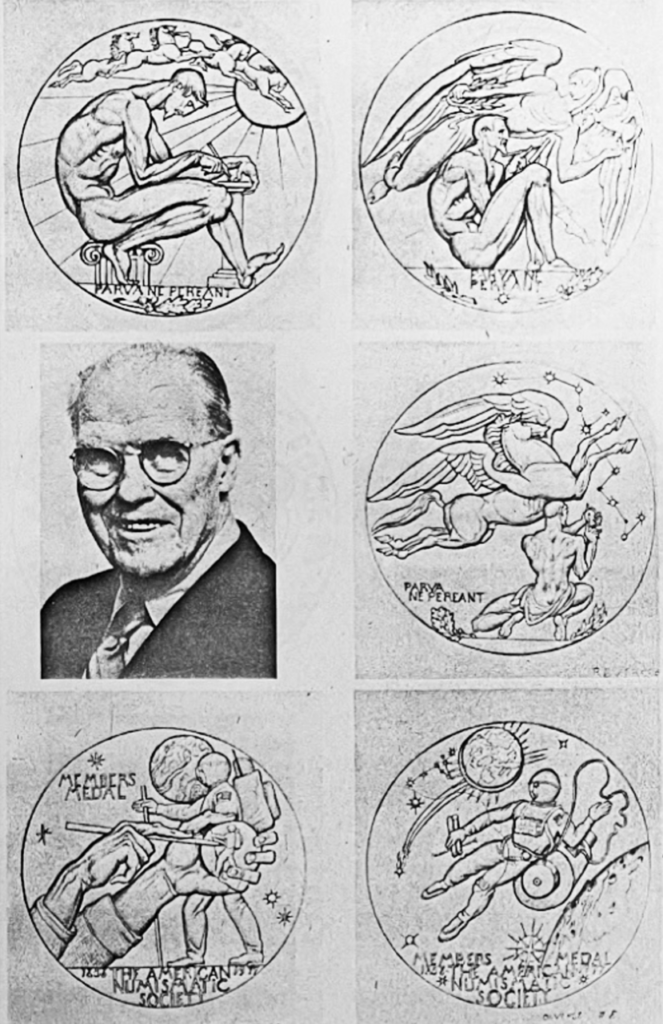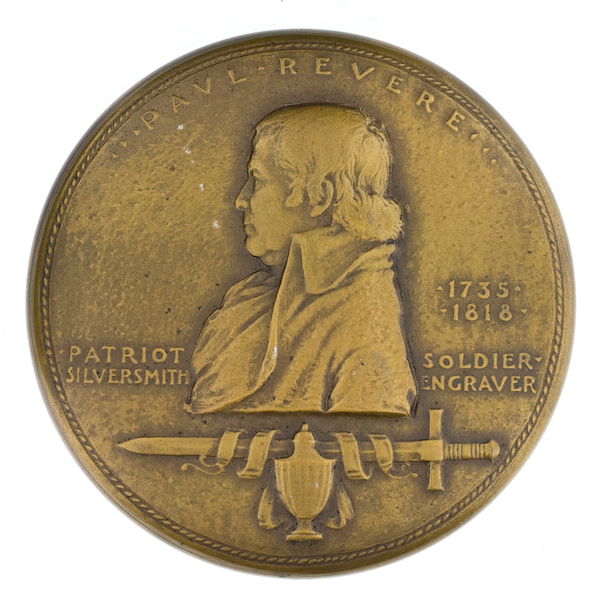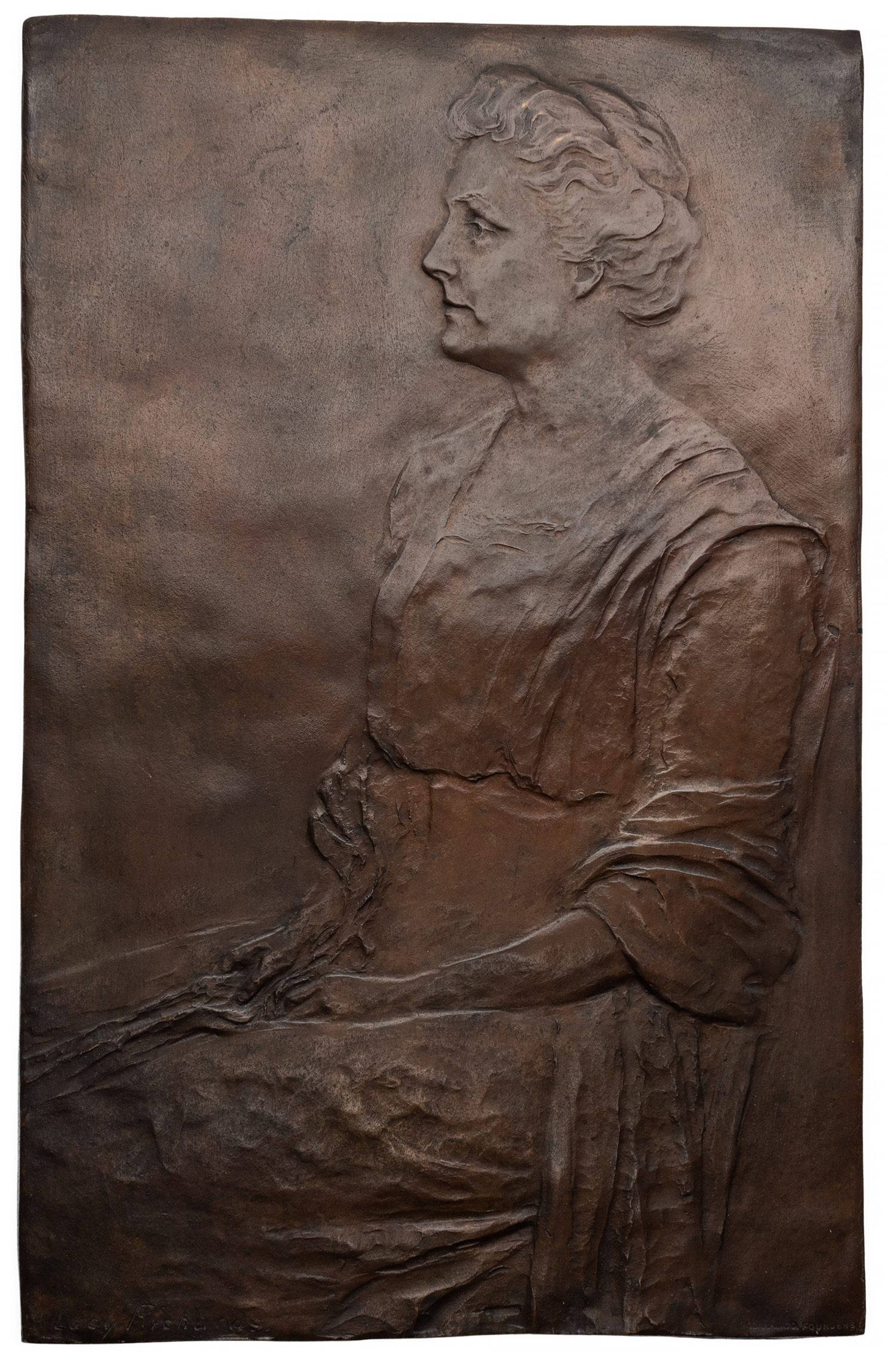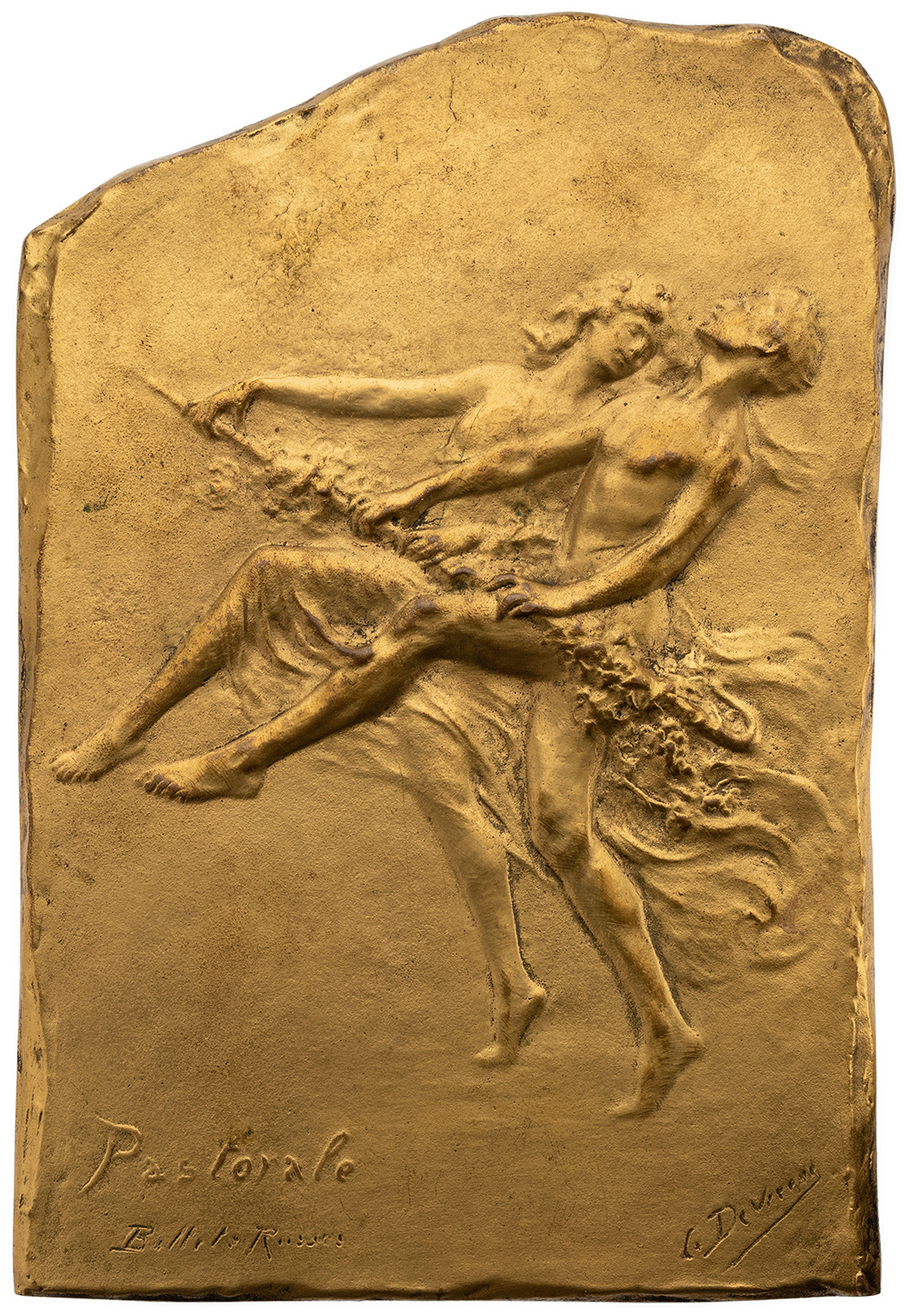A Sketch of A Sketch
In late June 2021, Heidi Wastweet led a stellar Long Table discussion about her work as a medallic artist and sculptor. She drew her material primarily from a popular lecture she delivered in 2019 at the Shanghai Coin Design Forum, but adapted the program to the conversational nature of the Long Table. One of her slides led me on a pleasant jaunt of numismatic research, following a line of inquiry about a particular medal’s design.
After Wastweet’s presentation on the art and processes behind medal design and production, she facilitated a thought-provoking conversation for more than half of our numismatic lunch hour. She covered the unique parameters necessitated by the medallic form, reflecting on how artists navigate the tensions between intuition and intention when incorporating elements of design. The whole conversation was a lively one and, for me, one of the most resonant moments was when Dr. Ira Rezak reflected on how harmonious design is often a product of cultural context as much as anything else: beauty is in the eye of the beholder, yes, but the beholder has eyes and tastes derived from broader cultural expectations and aesthetic environments.
When reviewing other artists’ use of some of the design elements she discussed, Wastweet presented some interesting examples of various medals and medallic designs. Among these included a sketch of an unrealized medal by the American medalist Donald De Lue. This sketch features a male nude squatting low above the capital of an Ionic column. His left fingers clutch a thin pillar while he works with a stylus in his right hand. The prominent arc of the figure’s back and his general titanic proportions take up much of the medal’s foreground. Above, four horses gallop through the heavens towards a radiate sun. In the design’s exergue, three acorns on an oak branch settle under the lettering: PARVA NE PEREANT. Many of us in attendance at the Long Table immediately recognized the Latin phrase, acorns, and oak leaves from the motto and seal of the American Numismatic Society. The image came from a 2020 Doyle auction listed as the third item in lot 30, along with four other Donald De Lue sketches. The description included the motto and its translation, “Let Not the Little Things Perish”, without noting any association with the ANS.
I was curious to know if this sketch was a proposition for a new membership medal or if it might have been conceived as one of the several award medals given by the ANS, such as the obverse of the J. Sanford Saltus Award seen above. The latter came to mind because the Saltus Award bears thematic resemblance to the sketch. Both feature a nearly-seated nude holding a stylus and both incorporate the Society’s motto and the oak leaves of the ANS seal under a groundline. The ANS has bestowed this medal on artists since 1919 in recognition of “signal achievement” in medallic art and the ANS honored De Lue himself with the Award in 1967.
After inspecting the Doyle auction, I found the above De Lue sketch of the same design from a 2018 Jackson’s International Auction. This Modern & Vintage Masters auction lists Lot 57 as “Three Preparatory Drawings / Donald De Lue”. There are some subtle differences in this sketch from the previous one: the lack of the Ionic capital, the inclusion of an extra toe in the balancing left foot, and the awkward left hand which grips the pillar as if with a broken wrist of a too-long arm. These factors and the overall sketched quality of the drawing indicate it as an obvious earlier version of the design. The auction house described the sketch as an “Art Deco circular drawing inscribed PARVA NE PEREANT, […] 12 inches in diameter,” again, without any reference information indicating that this was a design for the ANS or naming its purpose. It was gifted “To Karen Tortorella / My Friend and Fellow-Artist / With Warmest regards / From Donald De Lue / Sculptor / 1978″. The year listed, 1978, gave me somewhere to start.
Now that I had a rough date for the design—or, at least, a terminus post quem—I went to Scott Miller’s Medallic Art of the American Numismatic Society. Here, Miller notes that the “need for a new member’s medal became apparent by the 1960s as existing stocks of the [Gutzon] Borglum Medal were exhausted” (Miller 2015.27, above). He further explains that, a “competition was held, with Frank Eliscu declared the winner.” The winning Eliscu design would become the third membership medal of the Society (Miller 2015.53, below; Miller, p. 138), after the Borglum and earlier George Hampden Lovett designs. Miller, unsurprisingly, was also in attendance at the Long Table.
There was no doubt that the De Lue sketches were from a submission proposed for this contest. I turned to the ANS Archives to learn more. The files of ANS curator Jeremiah D. Brady in the ANS Archives include the related material for the competition commissioned by the ANS Council, including notes and correspondence of the artists, judges, and other related parties. Corresponding with Director Leslie Elam, De Lue accepted an invitation in a letter dated Feb. 22, 1977, writing:
Dear Mr. Elam,
Thank you for the invitation to compete for the Societies [sic] Members Medal. As per my telephone conversation with you, I will enter the competition. When you have the information I would be interested in knowing who the other competitors are.
Sincerely,
Donald De Lue
In addition to De Lue and Eliscu, artists Karen Worth, Gifford Proctor, and Thomas Lo Medico competed. Among T. James Luce, Julius Lauth, Thomas Wilfred, Robert Weinman, Marc Salton, and Jeremiah Brady, Dr. Ira Rezak also served on the jury for the medal competition.

These ANS Archive files also confirmed that the design from the De Lue sketch was, in fact, a medalist making a medal, a particularly fitting image for the topic of Wastweet’s Long Table. In a 1977 COINage article, “Contest for a Medal: Five Top Sculptors and Their Designs for a Major Numismatic Showpiece”, David L. Ganz explained the background for the competition and enumerated the designs these five artists submitted. Included was a final rendering of the De Lue design in the top left, as well as four additional De Lue proposals. In total, he offered two space-age designs as obverses and three ancient medalists as reverses. The article even describes his artistic vision for the reverse that initially piqued my interest. De Lue envisioned the ancient medalist moved to creation after attending a horse race, pausing to sculpt at a Greek temple undergoing construction. Seeing these alternative reverse designs reminded me of another Due Lue design from the 2018 Jackson International auction gifted to Karen Tortorella, a sketch of a medal for Brookgreen Gardens in South Carolina.
While the curvature of the central seated figure’s spine and the shading of the musculature of the abdomen closely resemble the sketch for the ANS medal, the modeling of the seated figure clearly derives from one of the other submissions for the ANS medal competition. Note the submission on the upper right of the COINage scan. The figure was kept more or less the same, given a fuller beard, and his stylus and medal reimagined as a contemplative pose. The winged spirit of medallic inspiration crowning the medalist with a laurel became a spangled muse inspiring the pensive sculptor-philosopher. Unlike the ANS design; however, an altered version of this design did come to fruition. With a few adjustments between sketch and final form, such as the removal of the winged horse in the muse’s left hand and the leaf from the exergue, an example of this Brookgreen Garden medal is housed in the Society’s collection, ANS 1980.157.1.
Seeing this medal in the ANS collection brought the story around full-circle. A nature haven for sculptures and sculptors alike, Brookgreen Gardens was founded by early twentieth century benefactors of the ANS, Archer and Anna Hyatt Huntington. Not only that, but Heidi Wastweet herself has trained medalists as a teaching artist at Brookgreen Gardens for years—and also produced a medal for the institution in 2017, one which she showcased during her Long Table (2017 Brookgreen Medal).
During this jaunt, I learned more about some of the processes that went into producing these medals, as well as how different institutions like the ANS and Brookgreen Gardens have gone about commissioning works through the years. Heidi Wastweet’s Long Table discussion, along with those recently hosted by Eugene Daub and Mashiko, was a fantastic glimpse into artistic perspectives on numismatic topics and I’m looking forward to more to come. For me, the best sorts of programs are ones like these, where further inquiry emerges and the conversation continues.




